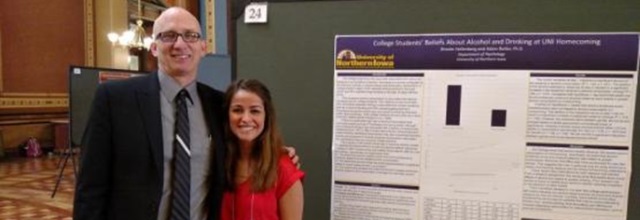Honors Program Theses
Award/Availability
Open Access Honors Program Thesis
First Advisor
Ryan McGeough, Advisor
Keywords
United States--Foreign relations--Cuba; Cuba--Foreign relations--United States; United States--Foreign relations--2009-2017; Cuba--Public opinion;
Abstract
On March 22, 2016, United States President Obama and Cuban President Raúl Castro sat side-by-side in the Estadio Latinoamericano baseball stadium, watching the Tampa Bay Rays and the Cuban national team face off in a historic game. Such an event would have been unprecedented in the several decades prior to its occurrence. Indeed, though at the U.S.-Cuba game Obama and Raúl Castro were even as friendly to have participated in doing “the wave” together,ii relations between the U.S. and Cuban governments were anything but, even during the preceding U.S. presidency of George W. Bush.
The United States has had a strained relationship with Cuba for decades, and that relationship began to be transformed during Barack Obama’s term as president. During his presidency, Obama declared a shift from trade embargoes and harshly restricted travel to a policy that would be incrementally more open, his stance offering a stark contrast from his post-Cold War predecessors. Further, there has been a drastic shift in public opinion of Cuba accompanying this change in policy – 54 percent of Americans viewed Cuba positively according to a 2016 Gallup poll, an increase of 33 points in just 10 years. In order to investigate the relationship between rhetoric, policy change, and policy acceptance, I analyze the shifts in President Obama’s rhetoric regarding Cuba that accompanied his policy changes. To do so, I compare his rhetoric with that of President George W. Bush who preceded him and maintained the embargo.
The United States’ relationship with Fidel Castro’s Cuba began to sour not long after the Cuban Revolution ended in 1959. At this point, the 61 year-old country of Cuba underwent an exchange of power when Fidel Castro’s coup succeeded in overthrowing President General Fulgencio Batista, an action supported by the United States through means of an arms embargo on the Batista administration. This early support, and the belief that Fidel Castro would be a more democratic leader than Batista, led to an initially positive relationship between the United States’ and Castro’s Cuban government. However, the United States did express concerns over Fidel Castro’s communist ideas and execution of hundreds of Batista supporters.
Although Fidel Castro visited the United States within the first four months of his regime and even met with Vice President Richard Nixon while in D.C., within two years Fidel Castro had enacted several communist policies – from seizing public land to nationalizing hundreds of private companies. He also heavily taxed American products, causing American exports to Cuba to be cut in half. The Eisenhower administration responded with trade restrictions, vii but when Cuba subsequently increased trade with the Soviet Union, the United States cut diplomatic ties with Cuba. viii Soon after, President Kennedy expanded the trade restrictions to create a permanent trade embargo on Cuba, referring to the threat of the island nation’s communist ties.
In the early 1960s, the U.S. repeatedly attempted to assassinate or depose Fidel Castro through multiple operations including the failed Bay of Pigs Invasion, worsening the relationship between the Cuban and United States’ governments. The “darkest moment in the countries’ relationship” occurred in 1962, however, when the Soviet Union placed missiles in Cuba, threatening the security of the United States. The world held its breath for the resulting 13-day standoff known as the Cuban Missile Crisis that TIME refers to as a “white-knuckled nuclear face-off”. Almost two decades later, in 1980, the economic downturn in Cuba caused many Cubans to seek asylum in the United States. Although Castro initially gave his blessing and even announced to Cubans through which port they could leave Cuba, when they wanted to return home, the regime further strained relations with the United States by refusing to take them back.
The United States proceeded to tighten and ease embargo trade restrictions several times after its initial issuing, though always keeping it in place. In 2014, however, the administration of then-president Barack Obama announced plans to end the embargo and strengthen the relationship with Cuba. Obama’s sudden change of U.S. policy from one that supported the over 50-year-long embargo to one that denounced it and moved toward closer relations with Cuba was groundbreaking considering the long-standing rift between the U.S. and Cuba. Interestingly, the policy change occurred alongside a sudden shift in public opinion. As presidential rhetoric relates to both government policy and public opinion, I investigate the role rhetoric played in the United States’ shift in relations with Cuba. The significance in this analysis, therefore, is the presentation of how subtleties in rhetoric can and are used to support foreign policy objectives, and particularly how it can be done even when the result is a historic break, as has occurred with the United States’ changing relationship with Cuba.
Year of Submission
2017
Department
Department of Communication Studies
University Honors Designation
A thesis submitted in partial fulfillment of the requirements for the designation University Honors
Date Original
2017
Object Description
1 PDF file (41 Pages)
Copyright
©2017 Alyssa Chellan Dixon
Language
EN
File Format
application/pdf
Recommended Citation
Dixon, Alyssa Chellan, "A presidential paradigm shift: Changes in presidential rhetoric regarding Cuba" (2017). Honors Program Theses. 294.
https://scholarworks.uni.edu/hpt/294



